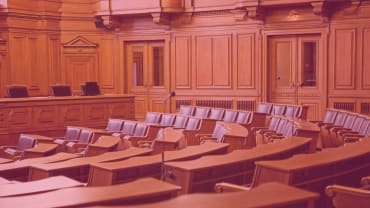Manchester Building Society v Grant Thornton [2021] UKSC 20 reconsiders the SAAMCo principle and, in doing so, sets out a six-part test for assessing the extent of a professional's liability for negligence. The significance of this landmark case lies in its potential for those pursuing negligence claims to seek a larger proportion of their losses from the professional(s) facing allegations.
Background
Grant Thornton (GT) acted as Manchester Building Society's (MBS) auditors until 2012.
MBS' business model included offering fixed-rate lifetime mortgages, which it offset against interest rate 'swaps' to guarantee a profit when the mortgages were eventually redeemed.
The value of these swaps was reflected on MBS' balance sheet, making its financial position appear volatile and requiring it to hold increased capital reserves. In 2006, GT advised MBS that 'hedge accounting' could be applied to minimise the impact of the swaps. Relying on this advice, MBS entered into a series of further swap contracts.
In 2013 it was discovered that GT's advice was wrong. MBS had to sell the swaps early as they could not be treated with hedge accounting. as a result they suffered a loss of £32million.
GT accepted its advice was negligent; and the court held that ‘but for’ GT's negligence, MBS would not have entered into the relevant swaps (and would have avoided the £32m loss).
GT sought to rely upon the SAAMCo principle to limit its liability to issues within the scope of its duty of care.
At first instance and before the Court of Appeal, it was found that GT did not assume responsibility for the wider consequences of MBS' business model by offering advice about hedge accounting. Accordingly, the £32m loss was not within the scope of GT's duty of care and could not be recovered as damages. MBS appealed to the Supreme Court.
Revisiting SAAMCo – The end of the 'information vs advice' dichotomy
In a judgment that reviewed and clarified the history and application of the SAAMCo principle, the Supreme Court ruled in favour of MBS.
Courts have previously drawn a clear distinction between 'information cases' (the professional is liable only for the consequences of the information they provide) and 'advice cases' (the professional assumes wider responsibility for the consequences of the client's activities). The Supreme Court deemed this rigid distinction unsatisfactory and liable to mislead. Instead, the focus should be on precisely identifying the matters for which the professional had assumed responsibility.
Downplaying the SAAMCo counterfactual
The courts have previously used the 'SAAMCo counterfactual' to determine whether a particular loss falls within the scope of a professional's duties. This test asks what losses would have been suffered if the information provided by the professional had been correct.
In this case, the Court of Appeal found that even if GT's advice had been correct and hedge accounting could be applied, MBS would still have suffered a loss when they sold the swaps. Accordingly, applying the SAAMCo counterfactual, the £32m loss was not recoverable from GT.
The Supreme Court largely dispensed with the SAAMCo counterfactual, which was relegated to use as a 'cross-check' on the conclusions reached through proper analysis of the professional's duties. It may be used to support that analysis but cannot supersede it. Given the new test (below), however, its relevance as a 'cross-check' is now open to doubt.
Six-part test for negligence liability
Following its detailed critique of previous case law, the Supreme Court identified, a new, six-part test to establish liability for negligence:
- Is the loss or damage actionable in negligence?
- What are the risks to the claimant against which the professional has a duty of care? (the 'scope of duty' question)
- Did the professional breach their duty of care?
- Is the loss for which damages are sought the consequence of the professional's negligence?
- Is there a sufficient nexus between the particular element of the loss for which damages are sought and the scope of the professional's duty of care? (the 'duty nexus' question)
- Is any element of the loss too remote from the professional's negligence, or does it have another legal cause?
The SAAMCo principle is expressed in parts 2 and 5 of this new test. Part 2 requires detailed consideration of the relationship between professional and client and the purpose of the professional's advice to establish the risks the advice was intended to guard against. The novel terminology 'duty nexus' used in part 5 expresses the requirement to establish whether a particular loss falls within the scope of that duty.
The result
The Supreme Court concluded that GT's advice was sought by MBS specifically to assess whether it could pursue its proposed business model. The loss was caused by that business model and therefore fell within the scope of GT's duty of care.
Wider impact
This new MBS test has the potential for far-reaching consequences. Claimants may now seek to attribute a larger proportion of their loss to the professional. This follows the trend in Hart v Large, where the defendant surveyor was found liable in damages beyond the defects he could have been expected to identify. Each case hinges on its own facts and circumstances, so parties to potential claims should seek early advice.
The MBS case highlights the importance to professionals of proactively defining the scope and purpose of their advice through clear and precise letters of engagement and terms of business. In light of the risk of increased liability presented by the Supreme Court's ruling the importance of taking these steps cannot be understated.
Contributors
Associate
Senior Associate













